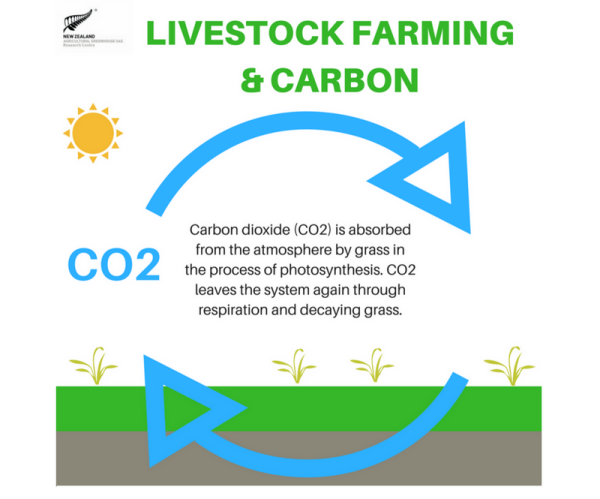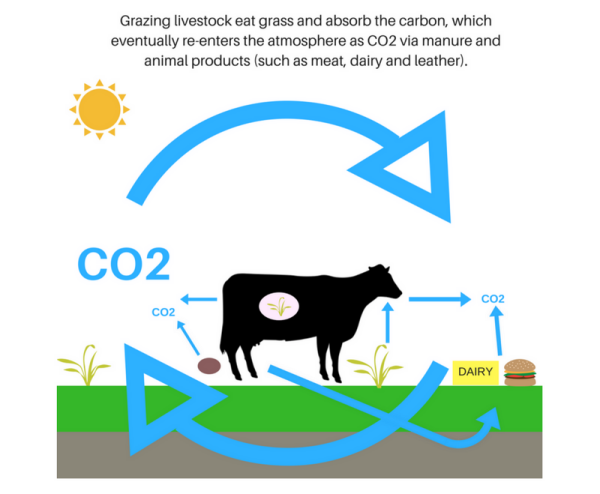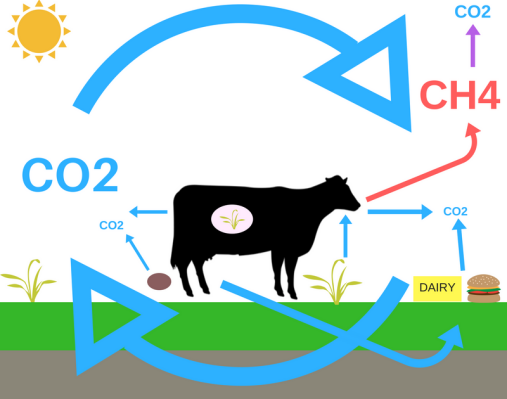How livestock affect the carbon cycle

Carbon dioxide is absorbed from the atmosphere by grass and other plants in the process of photosynthesis.
Pasture that is not eaten by animals breaks down naturally, and the carbon it contains returns to the atmosphere again as carbon dioxide through plant respiration and decay of dead plants. These processes cause no net change in carbon dioxide levels in the atmosphere.
If we now add grazing livestock such as sheep and cattle, the carbon cycle becomes more complex but it remains a cycle.

Livestock eat some of the grass and absorb the carbon it contains, but all of this carbon re-renters the atmosphere as carbon dioxide. Some of it re-enters it very quickly through the carbon dioxide that animals exhale. Some of the carbon is deposited in animal manure, which microbes break down into carbon dioxide. Some of the carbon is stored in animal products that we humans consume, such as meat and dairy; that carbon is released once we digest it or as food waste and dead animals decompose. Finally, some carbon is contained in animal leather, where it may be stored for many years before ultimately the leather decays and is again broken down by microbes.
Even though the individual processes are complex, there is no net change over time in carbon dioxide concentrations.
This cycle explains why growing grass and having livestock eat it is not a climate solution – it all remains a closed cycle. The only exception would be if some of the carbon is stored permanently in soil, by increasing soil carbon. This is possible in principle and would be very promising – but the evidence in New Zealand suggests that there has been very little net change in soil carbon across our agricultural lands.
If this cycling of carbon was the only thing happening in livestock systems, it would not make a substantial contribution to climate change.
But the digestive systems of ruminant animals also produce an additional and very powerful by-product: methane.

More information about the science of methane is available on the NZAGRC website's methane research section.
More information about the science of soil carbon is available on the NZAGRC website's soil carbon research section.


